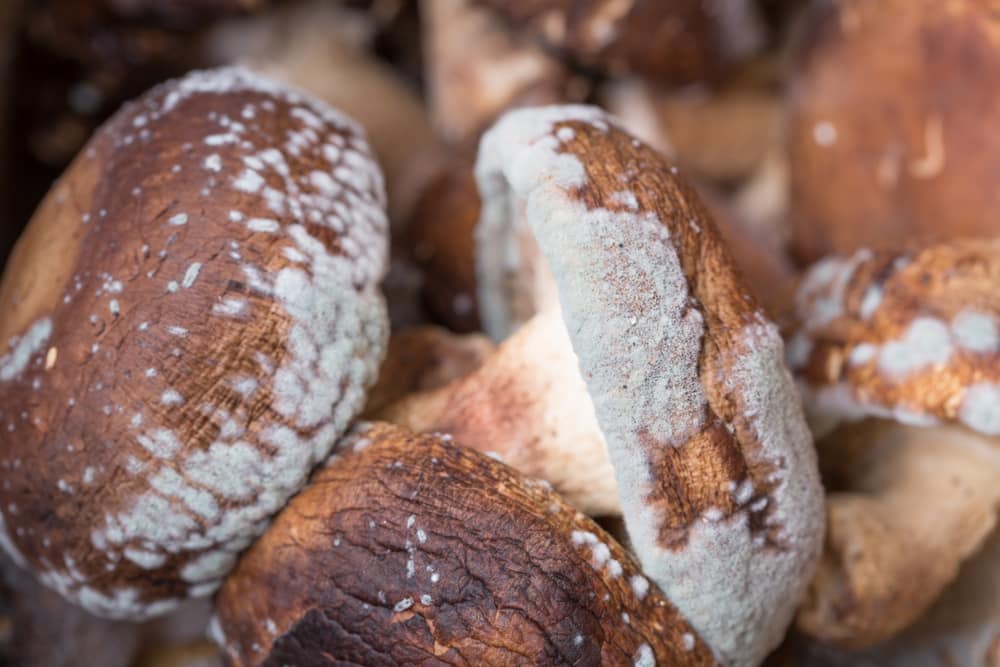
Mushrooms are one of the most common ingredients in any household. For centuries, they’ve been used as ingredients in food, medicinal purposes, and have many other applications of the sort. There are thousands of species of mushrooms, and each of them has a specific use. Many of these are used for cooking in the modern era all around the world. While they’re great additions to any meal, there are also certain problems that might come with them.
They can go bad and can develop a bad taste. They can omit bad odors or develop a strange color. Similarly, there are many other potential issues with this popular fungus. We’ll be discussing one of these issues today. Lots of users have inquired regarding whether or not mushrooms can get moldy. Here’s a guide that can answer all your important questions related to this.
Can Mushrooms Get Moldy?
The short answer to this popular question is yes, mushrooms are in fact capable of getting moldy. Most ingredients in the kitchen can get mold around them if stored improperly or for too long. Mushrooms are no exception to this, which is why it’s possible for them to get moldy as well. But, that’s not all you need to know about the topic. Another important thing to know is how to identify when they’re moldy in a way you can’t eat the fungi.
It doesn’t have to be said that you should never waste food. Throwing away many mushrooms just because you think they’re moldy can be a huge waste. So, let’s cover some details to give your insight on when mushrooms are safe to eat, and when they’re not. That way, you can avoid eating anything bad for your health while also being able to avoid wasting ingredients that are otherwise edible.
How to Tell When Mushrooms Are Safe to Eat?
A mistake that many people often make in the kitchen is throwing away mushrooms with white fuzz on them. This isn’t exactly any kind of mold or negative sign, but lots of people believe that it is anyway. This fine white fuzz is simply a kind of coping mechanism for these fungi. For those that aren’t familiar, mushrooms release a kind of spore from the inside when they’re removed from their natural environment and put into our kitchens. These spores grow into white fuzz.
So, if you ever see this on your mushrooms, don’t be alarmed! It’s completely safe and completely edible. It isn’t a kind of mold and not a reason to throw them out. You can eat mushrooms with this fuzz on them without having to worry too much about facing negative effects. But, there are also signs that tell you when you should throw them out.
For example, if there’s a strange coating on the fungus and it has a bad odor, that’s not normal or safe. You should immediately throw out mushrooms with these traits. There are other signs to watch out for too. If the surface of the mushroom feels mushy, then that’s another bad thing. Similarly, there being any visibly wet spots on the ingredient even when it hasn’t come into contact with water is also something to watch out for.
So, now that you know when to keep the mushrooms and when to throw them out, all that’s left to do is figure out how they get moldy in the first place. Continue reading as we’ll briefly discuss how this can happen.
What Causes Mold in Mushrooms?
There are multiple possibilities for there being mold on mushrooms. The most common possibility of them all when it comes to the kitchen is bad storage. Keeping this fungus stored incorrectly or for too long can both result in mold developing around it. The biggest cause of mold on mushrooms is moisture.
Make sure that there are no leaks or holes in the storage that might let moisture in and cause this. Similarly, make sure to use up the mushrooms quickly. Don’t buy them in bulk either, as most of them go bad after some days regardless of how well you’ve stored them. Just by following these two tips, you can ensure mold doesn’t develop around your mushrooms.